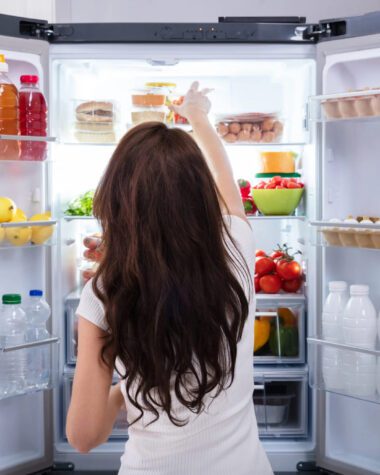Leftover foods are becoming more common in a lot of households, whether you are making batches of meals ahead of time or just to reduce food waste.
While leftovers can assist you in preparing healthy meals within minutes, there are several food safety measures you should take when making and preserving these items to avoid illnesses caused by food.
And one of the biggest contributors to illnesses linked to food is storing leftovers in the refrigerator for excessive time before eating them. That being said, it’s essential to understand that different foods deteriorate at various rates and that various factors contribute to food spoilage.
In this blog post, we at DaDongNY will tell you everything you need to know about the shelf life of leftover foods and how to preserve them so that they don’t affect you in the future.
What You Should Know Regarding Leftover Food Safety
You might not be aware, but one out of six Americans contracts a food-borne illness each year. While you may not realize it, the stomachache you experienced after consuming that 4-day-old pizza inside your refrigerator or that headache or lethargic feeling you got from eating those leftover Chinese foods could be symptoms of a dangerous food illness.
Salmonella, Norovirus, Clostridium perfringens, and Staphylococcus aureus are among the microorganisms known to cause food-borne diseases. Remember to follow the basics in preparing, storing, and reheating leftovers to avoid any accumulation of harmful germs and viruses.
Using The Right Temperature To Cook Food
One of the most common practices to keep your food safe is to cook it at the right temperature, especially when it contains potentially hazardous components like raw meats, seafood, or poultry. It is strongly advised to use a food thermometer to ensure that foods are always at the proper temperature before starting to cool the leftovers down.
The following temperatures should be used to prepare these meals or until they meet the requirements:
| Food | Temperature |
|---|---|
| Leftovers | 165 °F |
| Beef, pork, veal, and lamb | 145 °F |
| Ground meat | 160 °F |
| Poultry | 165 °F |
| Fish | 145 °F |
| Eggs | until the yolks and whites are firm |
Cooking And Storing Leftover Foods Properly
Everyone should keep track of the duration their leftover foods have been laying outside. If leftovers have been left out for more than two hours, they should be thrown.
If not, separating the meals into smaller servings would be advisable, keeping them in tightly sealed containers or firmly wrapped in plastic wrap and then putting them in your refrigerator to preserve their finest condition.
If you’ve cooked a lot of food, consider setting up an ice bath on large containers in order to chill the food properly. Sadly, food safety is the only benefit of the conventional method of splitting out the food and placing it on the counter if you seal all the lids tightly and refrigerate them.
How Long Can You Keep Leftovers Inside The Refrigerator
Whether you leave food out for people in your home to eat when it is convenient for them or get distracted during dinner preparation, it is important to be aware of the “danger zone,” which bacteria can grow quickly in this zone, which has a temperature range of 40 °F to 140 °F.
And any leftover foods in your refrigerator should be eaten within three to four days, according to the U.S. Department of Agriculture (USDA).
Here’s a visual representation of how long various leftover foods endure in your refrigerator:
| Food | Duration |
|---|---|
| Cheesecake | 3 to 4 days |
| Chili | 3 to 4 days |
| Chinese food | 3 to 4 days |
| Cooked pork | 3 to 4 days |
| Cooked shrimp | 3 to 4 days |
| Hard-boiled eggs | 1 week |
| Spaghetti | 3 to 4 days |
| Pizza | 3 to 4 days |
| Pumpkin pie | 3 to 4 days |
| Rice | 3 to 4 days |
| Roasted chicken | 3 to 4 days |
| Soup | 3 to 4 days |
| Sushi (with raw fish) | 2 days |
| Sushi (with cooked fish) | 3 to 4 days |
The Dangers Of Consuming Spoiled Leftover Foods
Since there are three to four days for how long leftovers last, eating leftovers past their optimum condition or under-heated could put people at risk for food poisoning.
However, according to the Mayo Clinic, food poisoning is an ailment from consuming contaminated food. Among the symptoms are:
- Nausea
- Vomiting
- Abdominal cramps or pain
- Diarrhea
- Fever
You should avoid eating visibly spoiled food, but just because your weeks-old leftovers appear and smell acceptable doesn’t mean they’re edible. According to the Washington State Department of Health, the germs that cause sickness do not affect food’s flavor, smell, or appearance.
Only some people who consume rotten or expired food become unwell as a result of it. However, according to the Center For Disease Control (CDC), some people are more likely to have food poisoning. They are as follows:
- Adults 65 years of age and up
- Kids under the age of five
- Pregnant women
- People who have health issues or use medications that reduce their capacity to defend themselves against germs and illness as a result of a weaker immune system.
Simple Ways To Make The Most Of Your Leftovers
If you have a lot of leftovers and have no idea what you’ll do with them, think about integrating these ideas:
- Once completely chilled, freeze a portion of the meal for later.
- Use small containers to portion your leftover foods into single servings, then freeze them for future consumption.
- Bread could be refrigerated after being sliced and carefully wrapped for a quick grab-and-go slice.
- Leftover chili is delicious in quesadillas or sprinkled on top of nachos.
- Lentils can be added to scrambled eggs or sprinkled on a pizza.
- Frozen fruit and vegetables can be combined into smoothies.
- To avoid food waste, cut the recipe in half to make enough for you and your crew.
FAQs
- How Long Can Leftover Takeout Last In The Refrigerator?
If you had a lot of leftover takeouts from last night’s dinner that you want to save up for tomorrow. It’s essential to ensure you’re properly storing these food items to prevent food-related illness. These takeout dinners should be refrigerated for 2 hours and enjoyed for up to 4 days. Furthermore, it must be thrown if left out for over two hours or an hour in an area with a temperature of 90 °F or above.
Bottomline
Even though leftovers from last night’s supper may sound appealing to consume the next day, they are only safe and edible if properly stored at a suitable temperature. With the aid of this blog entry, we aim to have educated you on how to properly store them and how long leftovers can last so you don’t squander on your food.
To learn more about refrigerators and how this valuable piece of equipment chills the food and beverages inside, check out the post here.
Articles You May Be Interested In
- A Cooler Choice: Whirlpool v.s GE Refrigerators (Full Guide)
- Refrigerator Check: LG v.s Samsung Refrigerators (Full Guide)
- Cool Tech Showdown: Frigidaire v.s Whirlpool Refrigerators (Full Guide)
- Fridge Favorites: Bosch v.s LG Refrigerators (Full Guide)
- Cooling Conundrum: Whirlpool v.s Samsung Refrigerators (Full Guide)
- Tale Of The Tape: Maytag v.s Whirlpool Refrigerators (Full Guide)
- Fridges in Focus: Thermador v.s Sub-Zero Refrigerators (Full Guide)
- Fridge Frenzy: Sub-Zero v.s Viking Refrigerators (Full Guide)
- The Big Chill: Whirlpool v.s KitchenAid Refrigerators (Full Guide)
- Refrigerator Bout: Whirlpool v.s LG Refrigerators (Full Guide)









